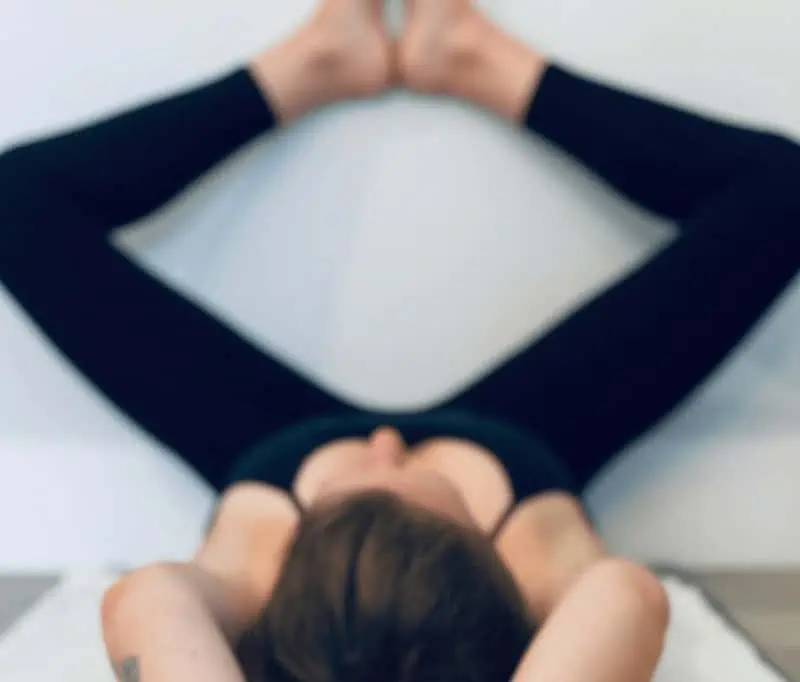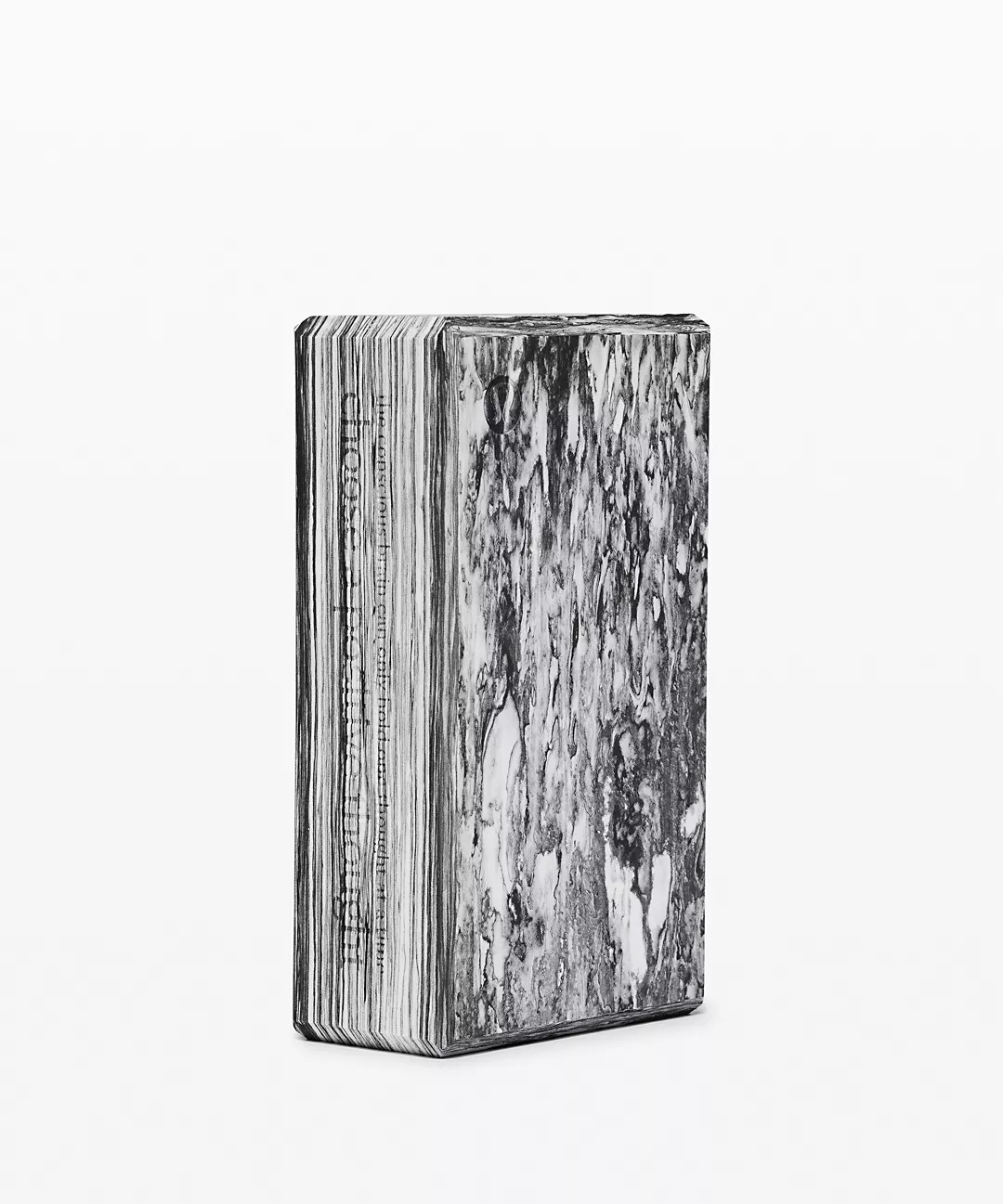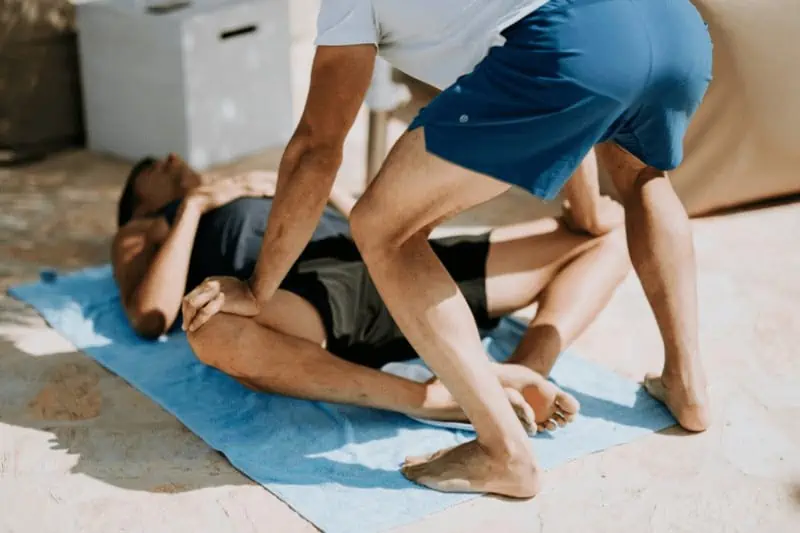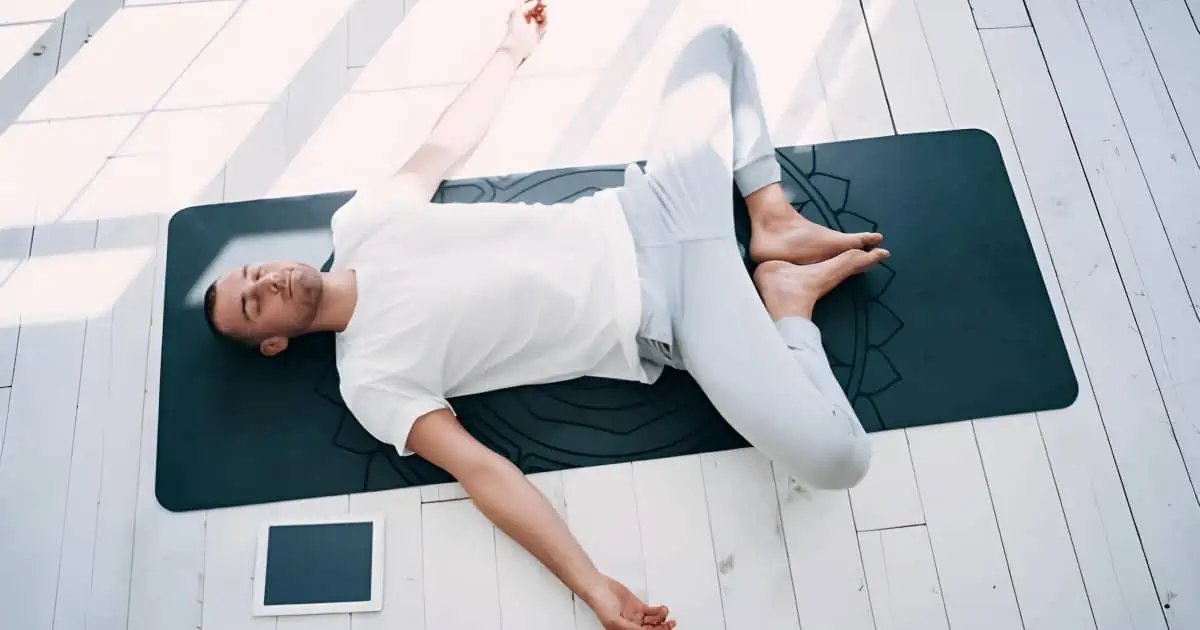Key Takeaway
Integrate Supta Baddha Konasana, or Reclining Bound Angle Pose, into your yoga routine to improve hip flexibility, reduce lower back pain, and relieve stress. Learn how to use this relaxing posture in restorative yoga or at the end of your yoga sequences to embrace the qualities of introspection and surrender.
| SUPTA BADDHA KONSASANA | |
|---|---|
| Alternate name: | Reclining Bound Angle Pose |
| Difficulty level: | Beginner |
| Pose category: | Reclined (torso) Hip opener (hips) Restorative (entire body) |
| Muscle groups: | Adductors (inner thighs) Hip flexors (hips) Groin muscles Lower back muscles Chest muscles (pectoralis major and minor) Shoulder muscles (deltoids) |
| Physical benefits: | Hip opening, enhanced circulation, improved respiration. |
| Therapeutic applications: | Hip opening, stress relief |
| Preparatory poses: | Cat-Cow Stretches (Marjaryasana-Bitilasana) Reclined Windshield Wipers (Supta Padangusthasana) Happy Baby Pose (Ananda Balasana) |
| Counterposes that follow well: | Savasana (Corpse Pose) Wind-Relieving Pose (Pavanamuktasana) Happy Baby Pose (Ananda Balasana) |
| Chakras activated: | Sacral Chakra (Svadhisthana) |
| Most helpful prop: |  Bolster under spine - supports back, opens chest. See latest price |
Some people are drawn to practicing yoga because of the graceful movements and impressively intricate shapes. There is a lot of value in challenging yourself through a strong, physical yoga practice.
However, after practicing yoga for nearly two decades, I’ve come to find that some of my favorite yoga poses are not the most impressive or fancy to look at. And sometimes, the more restorative poses prove to be the most challenging!
Supta Baddha Konasana, also known as Reclining Bound Angle Pose, is one of those poses. In my teaching, I embrace this restorative pose for its ability to guide yogis toward a holistic and reflective yoga journey.
Roll out your mat and get ready to enter “rest and digest” mode with the rejuvenating and transformative Reclined Bound Angle Pose.
Contents
- 1 Introducing Reclining Bound Angle
- 2 Step-by-Step Guide to Supta Baddha Konasana
- 3 Contraindications of Reclined Bound Angle Pose
- 4 Helpful Modifications and Props
- 5 Supta Baddha Konasana Benefits
- 6 Sequencing Yoga Poses Before and After Supta Baddha Konasana
- 7 Deepening Your Supta Baddha Konasana Experience
- 8 Embracing Relaxation and Mindfulness in Supta Baddha Konasana
- 9 Conclusion
- 10 Frequently Asked Questions
Introducing Reclining Bound Angle
In my yoga classes, I enjoy telling my students a bit of background information about new asanas. Learning about new poses is a great way to expand your yoga knowledge and foster a sense of curiosity and awareness when trying new poses.
Here are a few basic facts about Supta Baddha Konasana or Supine Bound Angle.
Use and Name
Supta Baddha Konasana is a key asana in restorative yoga, but you’ll find it included in many yoga sequences. I love to include it at the beginning of a yoga session for grounding and presence or at the end of class as a transition into the final relaxing phase of Savasana.
The standard English name comes from its Sanskrit translation:
- Supta = supine, or lying on the back
- Baddha = bound, referring to the appearance of the feet being bound together
- Kona = angle, describing the diamond shape of the legs
- Asana = posture or pose
Some yoga teachers may call this Reclining/Supine Butterfly or Cobbler’s Pose.
Key Muscle Groups Engaged
Knowing some basic anatomy of yoga asanas builds body awareness. It also helps you decide when you need to practice a specific stretch.
Here are the key targets in Supine Bound Angle:
- Stretching: hips, inner thighs (adductors), and groin
- Releasing: shoulders and lower back
- Opening: chest
These target areas are the source of many aches and pains, especially in people who spend many hours seated or hunched over a desk. At the end of a long work day, the open position of Supine Bound Angle brings significant release.
Yin Yoga Experience
In Yin Yoga, we use different asanas to target energetic lines within the body called meridians. Supta Baddha Konasana targets the Kidney meridian, which corresponds with the emotion of fear.
So, when you include Reclining Bound Angle Pose in a yin sequence, you might notice emotions like anxiety or apprehension bubbling up to the surface to be released. This Yin Yoga meridian theory helps us understand why hip-openers can be an intense experience!
Step-by-Step Guide to Supta Baddha Konasana
Now that you know what to expect from this asana, let’s get into Reclining Bound Angle Pose step-by-step.
Reclining Bound Angle Pose Instructions
- Lie down on your yoga mat with your knees bent and the soles of your feet planted on the floor. Your knees should be pointing toward the ceiling.
- Gently open your knees, letting them fall open to opposite sides.
- Bring the soles of your feet together, creating a diamond shape with your legs.
- Open your arms slightly, letting them rest on the floor. Turn your palms up to face the ceiling.
- Consciously relax the muscles around your hips, allowing gravity to pull your knees open and down toward the floor gently.
- Hold for 2 to 10 minutes, breathing deeply.
- When ready to exit, bring your hands to the outsides of your legs and close your legs like a book. Then, slowly extend both legs into Savasana (Corpse Pose).
Gradual Progression
Ease into Supta Baddha Konasana slowly. Allow gravity to gently open your legs without forcing them down to the floor.
Pro-tip: When holding this asana, consciously work through relaxing each muscle.
- Notice which parts of you are gripping or tense.
- Intentionally soften that area with your inhale.
- As you exhale, release tension from a specific location.
- Systematically work through your body: feet, knees, hips, lower back, shoulders, and even your jaw and face muscles.
Gentle Release
The release is just as important as the pose itself, especially in restorative poses that work on your soft tissues. After several breaths—or minutes—in the pose, your ligaments will be loose and open. Take your time to move out of the posture to prevent injury.
Contraindications of Reclined Bound Angle Pose
Although Supta Baddha Konasana is a relaxing pose, it can also be intense. The external rotation of the legs can present challenges for some yogis. Here are some precautions to consider with this asana.
- Be mindful of sensations in your joints: Individuals with knee or hip issues should approach this pose cautiously. Pay attention to physical sensations and modify the pose as needed (see the following section).
- Lower back precautions: Severe tightness around the hips may cause the pelvis to tilt forward, compressing the lower back and causing strain. Using support such as cushions can help prevent strain on the back muscles.
If you experience discomfort in your joints or lower back, there are several ways you can modify the pose to make it work for your range of motion.
Helpful Modifications and Props
Supta Baddha Konasana, or Reclining Bound Angle Pose, should be a relaxing experience. Luckily, there are many ways to support yourself in this intense stretch. Try these prop-supported variations to discover which version feels best to you.
- Bolster: Place a bolster lengthwise under the spine, from the lower back to the head. This supports your spine and adds more of a chest-opening effect. You may also place cushions under your hands so your arms relax comfortably.
- Blocks: To prevent any sensations of pain or pulling in your joints, place a yoga block under each knee.
- Blanket: Provide your legs with extra cushion and place a rolled blanket horizontally under the knees.
Shoulder-Opening Variation
Changing the placement of your arms can add a slightly more intense shoulder and chest-opening effect.
Once in Reclining Bound Angle Pose, extend your arms at shoulder height, palms facing the ceiling. Then, bend your elbows, making a cactus shape with your arms.
Inversion Variation
Try practicing Reclining Bound Angle Pose against a wall. This adds a slight inversion to the posture, increasing the effects.
Set up in Legs-Up-the-Wall Pose, then slowly bend your knees and bring the soles of your feet together. Keep the outer edges of your feet against the wall. Gravity draws your heels closer to your pelvis as you hold the pose.

Individual Expression
Every person’s body is unique, which means flexibility varies greatly. Very few people’s knees open all the way to the floor. Sometimes, it’s not even an issue of flexibility. Anatomical variations in joint structure can affect the range of motion.
For this reason, responsible yoga teachers should always offer modifications and props, allowing students to honor their bodies’ limits while still engaging in a meaningful stretch.
Ensure you’re prepared for all types of restorative poses: a Manduka bolster and lululemon blocks will give you all the support you need!

lululemon’s Lift and Lengthen Yoga Block
Supta Baddha Konasana Benefits
Reclining Bound Angle Pose, like many restorative poses, offers several positive physical and therapeutic effects.
- Hip opening: Hips can become tight from sitting or physical activity. This pose releases muscle tension surrounding the hip joint, groin, and inner thighs. Stretching the hips helps maintain overall mobility and can prevent back pain.
- Enhanced circulation: The supine position of Supta Baddha Konasana helps improve circulation. Your heart pumps blood more efficiently as you lie back and allow gravity to work.
- Improved respiration: Reclining Bound Angle gently opens the torso, allowing your breath to flow more easily.
- Soothes abdominal pains: If you are experiencing digestive issues or menstrual pains, Supta Baddha Konasana can help relieve discomfort by gently stretching the abdominal region and increasing blood flow.
- Stress relief: Taking deep, diaphragmatic breaths in this asana soothes the nervous system and triggers your “rest and digest” mode. This regulates your blood pressure and produces a calm state of mind.
- Emotional and energetic shifts: Some people experience significant emotional release while holding Supta Baddha Konasana. It brings balance to your whole internal system by opening energetic pathways.
Sequencing Yoga Poses Before and After Supta Baddha Konasana
Creating a balanced yoga session involves careful planning. Begin with a general warm-up, focusing on the area you aim to stretch. Select poses that complement each other throughout the session. Finally, end with a resting posture that allows you to fully integrate your experience.
Gentle Warm-Up
A good yoga sequence starts with gentle warm-up poses. For Supta Baddha Konasana, it’s helpful to mobilize the spine and hips gently with yoga poses like:
- Cat-Cow Stretches
- Reclined Windshield Wipers
- Wind-Relieving Pose
- Happy Baby Pose
Complementary Asanas
After warming up, you can choose complementary yoga poses that fit the theme or intention of your session. Here are some poses I like to pair with Supta Baddha Konasana in my classes, each with a different focus.
- Hip release: Pair Supta Baddha Konasana with asanas like Yogi Squat, Lizard, and Pigeon poses to open your hips deeply.
- Restorative poses: Relieve stress using Supta Baddha Konasa with other Yin Yoga poses like Supported Fish, Banana, and Child’s Poses.
- Inner thigh focus: Strengthen and lengthen your inner thigh muscles with asanas like Triangle, Warrior II, Wide-Legged Forward Fold, and Frog Pose; end with Reclining Bound Angle to rest.
You can see how this asana fits well in various yoga sequences. Supta Baddha Konasana can be your main focus in a Yin sequence, a warm-up for more intense leg stretches, or a resting posture after a strong Vinyasa class.
Need some guidance for these suggested yoga poses? You can find all of our detailed tutorials here.
Deepening Your Supta Baddha Konasana Experience
Breathwork and attention to bodily sensations are vital in enhancing your Supta Baddha Konasana. To get the most out of this transformational asana, try these techniques:
- Focus on Breathwork: To deepen relaxation in Supta Baddha Konasana, concentrate on breathing. Inhale deeply through the nose, filling your lungs. Then, slowly exhale, letting go of tension. This flow of breath helps release stress and invites calmness.
- Increase Duration Gradually: Building endurance in yoga poses takes time. In Supta Baddha Konasana, start by holding for two minutes. As your ligaments and joints become more mobile and you become more comfortable, try adding another minute to your hold time.
- Notice Physical Sensations: While reclining in Supta Baddha Konasana, pay attention to subtle sensations. Notice the parts of you that are touching the floor to feel grounded. Acknowledge areas of tightness and ease without judgment.
Embracing Relaxation and Mindfulness in Supta Baddha Konasana
Supta Baddha Konasana offers a unique space for rest and reflection. It encourages stillness, deep breaths, and heightened physical awareness — all tools for cultivating mindfulness.
- Present-Moment Awareness In Yin yoga, stillness is key. Supta Baddha Konasana allows you to be present. As you settle into the pose, your breath becomes your focus. With each inhale and exhale you become more connected to the here and now.
- Calming Mind and Emotions: This resting position soothes emotions. The act of surrendering to gravity’s pull calms the mind. Your breaths become longer as stress fades away with each exhale.
- Personal Insights Reflection: I’ve found unexpected clarity during quiet moments of stretch and release in Supta Baddha Konasana. It’s as if each release of discomfort opens the door to understanding myself better.
These introspective effects of Supta Baddha Konasana make this asana one of my favorites after a long or stressful day. It helps me clear my head and feel grounded in the present moment.

Conclusion
Supta Baddha Konasana is not merely a physical posture; it’s a gateway to self-discovery, a reminder to surrender, and an invitation to explore the profound connection between breath, body, mind, and spirit.
As you incorporate this pose into your yoga sequences, may you continue to unfold its layers, discovering new nuances and sensations with each inhale. Whether seeking relief from physical pains, a sanctuary for the mind, or a pathway to inner peace, Supta Baddha Konasana will accompany you on your journey toward holistic well-being.
After sharing clear practice instructions and sequencing ideas, I hope you use this restorative pose as a source of solace and rejuvenation on and off the mat.
Achieve new levels of relaxation as you embrace this tranquil asana, reflecting on how it harmonizes your entire being. I invite you to incorporate Supta Baddha Konasana into your regular yoga sequences and experience its transformative effects for yourself.
Frequently Asked Questions
What is Supta Baddha Konasana?
Supta Baddha Konasana, or Reclining Bound Angle, is a resting yoga posture for the hips.
What are the main benefits of Supta Baddha Konasana?
This pose helps reduce stress, stimulates abdominal organs, and improves circulation. It also stretches the inner thighs and groin.
Can I use props for Supta Baddha Konasana?
Yes, props like blocks, a bolster, or a blanket can support the lower back and leg joints for comfort and alignment.
Are there any contraindications for Supta Baddha Konasana?
Individuals with hip or knee injuries should avoid this pose or practice cautiously under expert guidance.
How do I sequence poses around Supta Baddha Konasana in a yoga session?
Incorporate gentle hip openers before, use it after inner thigh strengtheners, and follow with a resting posture like Savasana.
How does Supta Baddha Konasana promote mindfulness?
The pose encourages deep breathing and present-moment awareness, enhancing mindfulness.
What should I focus on while in Supta Baddha Konasana to deepen my experience?
Focus on releasing your muscles progressively and maintaining even breaths to deepen your experience in the pose.







